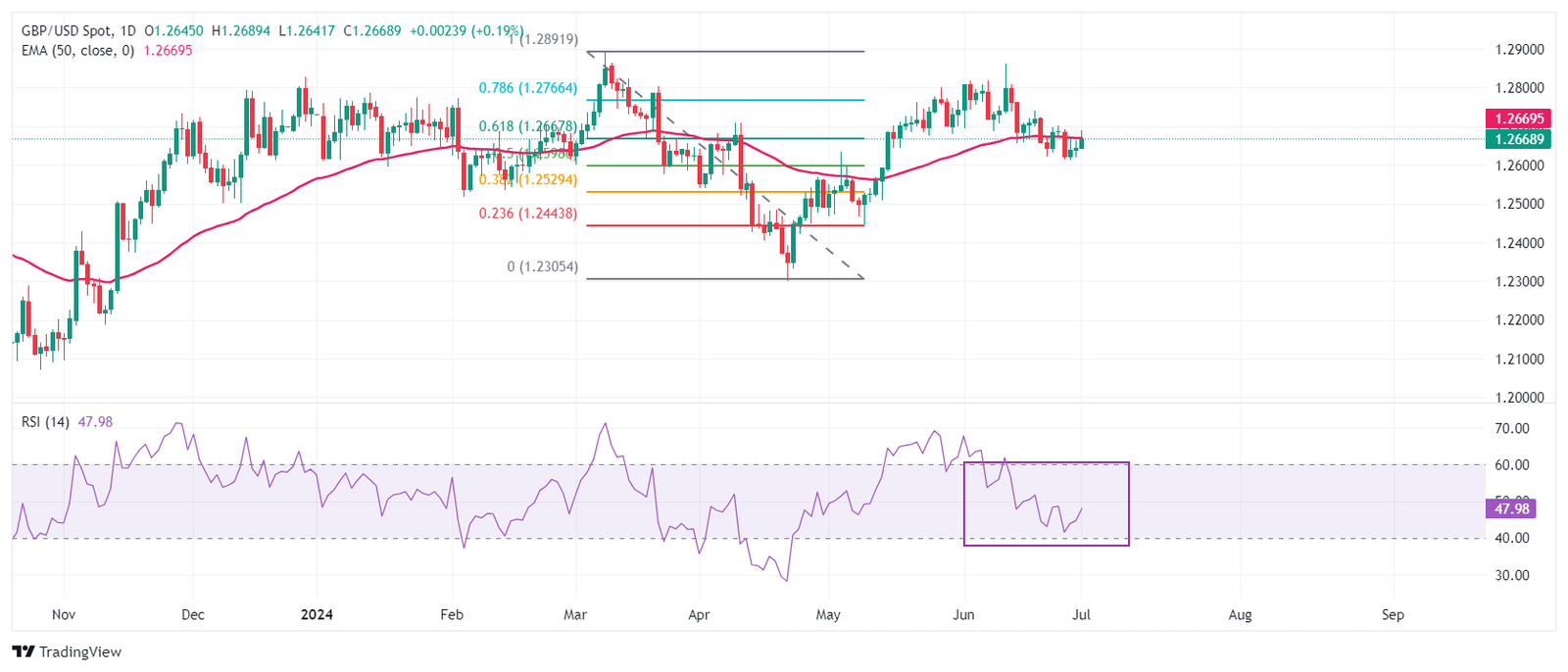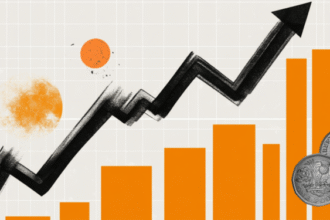- The Pound Sterling moves higher against the US Dollar as the Fed is expected to begin reducing interest rates in September.
- UK annual headline inflation has returned to the desired rate of 2%.
- Investors await the US ISM Manufacturing PMI for fresh guidance on interest rates.
The Pound Sterling (GBP) performs strongly against its major peers in Monday’s New York session. The British currency strengthens as investors remain uncertain about when the Bank of England (BoE) will start reducing interest rates.
Headline inflation in the United Kingdom (UK) has already returned to the desired rate of 2%. However, BoE policymakers see price pressures in the service sector as a preferred inflation measure, which is significantly higher than what is needed to gain confidence for rate cuts.
Currently, financial markets expect that the BoE will begin lowering interest rates from the August meeting.
Meanwhile, the Pound Sterling is expected to remain uncertain ahead of the UK elections outcome, which will kick off on July 4. According to the latest exit polls, the opposition Labor Party is expected to win from UK Prime Minister Rishi Sunak-led Conservative Party.
Daily digest market movers: Pound Sterling will be on toes ahead of UK elections outcome
- The Pound Sterling exhibits a strong performance against the US Dollar (USD). The GBP/USD pair moves higher to 1.2680 as the US Dollar declines after the United States (US) Personal Consumption Expenditures Price Index (PCE) report for May showed that price pressures declined expectedly. Annual core PCE inflation, the Federal Reserve’s (Fed) preferred inflation measure, decelerated to 2.6% from the prior release of 2.8%.
- The expected decline in the US inflation prompts expectations of Fed rate-cut bets for September. According to the CME FedWatch tool, 30-day Federal Fund futures pricing data shows that the probability for rate cuts in September is 63.4%. The data also shows that the Fed will deliver two rate cuts this year against one signaled by officials in their latest dot plot.
- Fed officials continue to argue in favor of keeping interest rates at their current levels until they get evidence that inflation will decline to the desired rate of 2%. The Fed wants to see inflation decline for months before pivoting to policy-normalization.
- Last week, Atlanta Fed Bank President Raphael Bostic said rate cuts would become appropriate when they are convinced that inflation is on a clear path towards 2%. When asked about a concrete timeframe for rate cuts, Bostic said: “I continue to believe conditions will likely call for a cut in the federal funds rate in the fourth quarter of this year,” Reuters reported.
- This week, the US Dollar is expected to deliver a volatile performance as the official ISM Purchasing Managers’ Index (PMI) and employment data for June are scheduled for release. Meanwhile, the ISM has reported weak US Manufacturing PMI for June. The Manufacturing PMI, which gauges activities in the factory sector, unexpectedly declined to 48.5. Economists expected the factory activity to improve to 49.1 from the prior release of 48.7. A figure below the 50.0 threshold is considered as contraction in manufacturing activities.
- Inflation in the manufacturing sector also dropped as the Prices Paid index, which indicates prices paid for inputs such as raw materials and wages, expanded at a slower pace to 52.1 from the estimates of 55.9 and the prior release of 57.0.
Pound Sterling Price Today:
British Pound PRICE Today
The table below shows the percentage change of British Pound (GBP) against listed major currencies today. British Pound was the strongest against the Swiss Franc.
| USD | EUR | GBP | JPY | CAD | AUD | NZD | CHF | |
|---|---|---|---|---|---|---|---|---|
| USD | -0.34% | -0.25% | 0.24% | 0.10% | -0.05% | 0.01% | 0.32% | |
| EUR | 0.34% | -0.14% | 0.28% | 0.14% | 0.16% | 0.04% | 0.36% | |
| GBP | 0.25% | 0.14% | 0.39% | 0.28% | 0.32% | 0.16% | 0.52% | |
| JPY | -0.24% | -0.28% | -0.39% | -0.13% | -0.23% | -0.23% | 0.13% | |
| CAD | -0.10% | -0.14% | -0.28% | 0.13% | -0.11% | -0.09% | 0.22% | |
| AUD | 0.05% | -0.16% | -0.32% | 0.23% | 0.11% | -0.13% | 0.25% | |
| NZD | -0.01% | -0.04% | -0.16% | 0.23% | 0.09% | 0.13% | 0.35% | |
| CHF | -0.32% | -0.36% | -0.52% | -0.13% | -0.22% | -0.25% | -0.35% |
The heat map shows percentage changes of major currencies against each other. The base currency is picked from the left column, while the quote currency is picked from the top row. For example, if you pick the British Pound from the left column and move along the horizontal line to the US Dollar, the percentage change displayed in the box will represent GBP (base)/USD (quote).
Technical Analysis: Pound Sterling struggles to break above 1.2700
The Pound Sterling rises to 1.2680 against the US Dollar after extending its recovery from an almost seven-week low of 1.2610. The GBP/USD pair moves higher but struggles to hold above 61.8% Fibonacci retracement support at 1.2667, plotted from the March 8 high of 1.2900 to the April 22 low at 1.2300.
The Cable hovers near the 50-day Exponential Moving Average (EMA) near 1.2640, suggesting uncertainty over the near-term outlook.
The 14-day Relative Strength Index (RSI) oscillates in the 40.00-60.00 range, indicating indecisiveness among market participants.





















